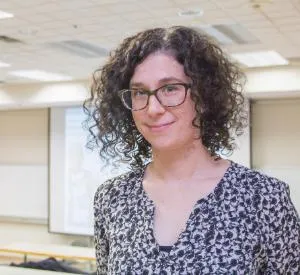
Dr. Kristi Allain hopes to see the winter sports of older Canadians better represented in Canada’s national identity.
The St. Thomas University Sociology professor has received an Insight Grant from the Social Sciences and Humanities Research Council to investigate the potential of shifting the way we celebrate sport in Canada by including the winter sports of older Canadians in our national celebrations of sport and in our national identity.
“In Canada, it is the sports played by young, aggressive, ostensibly straight, often-white, able-bodied men that garner the most public attention and support,” Allain said. “Interestingly, this is in spite of demographic changes that see the Canadian nation growing older and the retirement of the baby boomers.”
Similarly, her current research is focusing on men’s curling and how the sport changed after Team Jacobs won the gold medal at the 2014 Olympics.
“Curling held a really special place in Canadian cultural practices,” she said. “It was the only place where we saw old bodies and got to celebrate older people as emblematic of the nation. So unlike hockey, curling was one of the few sports where we saw on television the bodies of people who didn’t ascribe to a typical sporting body. These are bodies that look very different and the age range was broader.”
After the 2014 Olympics, Allain noticed that the bodies of curlers on television and in the media started to look more like those of hockey players.
“Although the press celebrated this as being an awesome thing, we were concerned because curling was one of the places where we could support diverse bodies.”
As part of the Insight Grant, Allain and her two research partners, Dr. Barb Marshall from Trent University and Dr. Ryan Rhodes from the University of Victoria, will use curling as a model but broaden their research to look at other winter sports practiced by older Canadians, like old-timer hockey or recreational skiing. They will also extend their research to include men and women.
“By telling the stories of later-life athletes, this work may challenge public conceptions about the possibilities for sport in later life and demonstrate the diversity of lived experiences of older people. It will also assist sports policy makers in their development of sport programs designed for those in later life.”
/filters:format(webp)/prod01/stuca/media/stu/site-content/news/BEd.jpg)
/filters:format(webp)/prod01/stuca/media/stu/site-assets/images/features/Bank-of-Canada-Governors-Challenge.jpg)
/filters:format(webp)/prod01/stuca/media/stu/site-content/news/Internship-news.jpg)